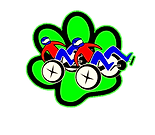


HISTORY
The UPRM Moonbuggy Project Design Team was founded in 2012 at the University of Puerto Rico at Mayagüez by a group of students from Mechanical Engineering. Since then we have brought together students from a wide variety of engineering departments, like Electrical, Software, Computer, Civil, and Industrial Engineering. Our objective is to manufacture a lightweight, strong, and cost effective human-powered space exploration vehicle. The team participates in the NASA Human Exploration Rover Challenge which is held every year in the "U.S. Space and Rocket Center" in Huntsville, Alabama. The team members must design a vehicle that can withstand a series of engineering problems, similar to the problems encountered by the original Apollo 11 team. Each rover must be powered by two students (one male and one female) on a track that simulates lunar terrain including craters, rocks, slopes and lunar traps.
MISSION
To design and manufacture a lightweight, strong, and cost effective human-powered space exploration vehicle, in order to develop as future engineers through a real-life situation.
VISION
To forge innovative leaders and professional engineers through the development of a winning team.
TEAM DEPARTMENTS
The UPRM Moonbuggy Project Design Team is divided into different subdepartments that specialize in a different area of the buggy. This makes it more efficient when the time comes to manufacture the rover. The departments are:
PROJECT MANAGEMENT DEPARTMENT
CHASSIS AND SUSPENSION DEPARTMENT
The Chassis and Suspension Department has two departments in one.
The Chassis Department is in charge of the front and rear chassis, collapsing device, seats, etc. Because the chassis is one of the most important parts in the buggy, this department must consult with all others to make sure every component has its space accounted for in the chassis. The students in this department design (from sketches to NX) and manufacture (from models, to cutting and welding) their parts for the main chassis of the moonbuggy.
The Suspension Department is in charge of the springs, shock absorbers, and linkages that connect the wheels to the chassis of the vehicle. Also, it is in charge of maintaining the vehicle's stability throughout any and all impacts it may receive during the competition, whether from the lunar terrain or obstacles, as well as allowing the wheels to maintain good contact with the road.
TELEMETRY DEPARTMENT
The Telemetry System Department is in charge of implementing electronic devices to the rover and using them to read and send important data regarding the rover’s surroundings and performance. It consists of micro-controllers, sensors, power banks, cameras and antennas. The micro-controllers work together to collect, send, and display data from the different sensors used in the system, such as the accelerometer, gyroscope and temperature sensor. Cameras on board show the atmosphere the rover is in as well as the obstacles it encounters. All this information helps to improve the rover and its performance.
DRIVETRAIN DEPARTMENT
Is in charge of developing the Gantt Chart in order to keep the project on time. Also, it works with the project's budget and is in charge of fundraising activities. Additionally, its members serve as the team's outreach personnel; making contact with possible sponsors and the University.
The Drivetrain (or Powertrain) department is tasked with the design, analysis, and manufacturing of the powertrain system that allow the drivers to impulse the rover through all the obstacles in the race by using chain, pulleys, and other components to transmit power to the wheels of the rover. This department consists of: transmission, shafts, structure support for the transmission and pedals, and the braking system. All the department responsibilities are to be engaged while keeping in mind several restrictions such as that the rover must be human-powered, no energy storage mechanism can be used, and the rover must be impulsed by a male and female simultaneously.
STEERING DEPARTMENT
This department’s focus revolves around the design, analysis, and manufacturing of the different components that make up the rover's directional system. A typical steering system is composed of linkages and various other components with the end purpose of allowing a vehicle to follow a desired course. Additionally, the handles and braking system fall under the steering department’s responsibility.
WHEELS DEPARTMENT
The Wheels Department is responsible for the design, analysis and manufacturing of the rover's wheels. The Department's main objective is to create a strong and efficient wheels that provides the best traction and movement possible, following the design parameters set by the team and the requirements established by NASA.
SAMPLE DEPARTMENT
Sample Retrival Department is dedicated to design and manufacture the mechanism to pick up samples that later will be inspected by a professional. The mechanism consists in a telescopic hand with a 3D printed scoop that has a bag attached to it. After, the sample bag is closed the sample is thrown into a 3D printed box for later inspection. The Sample team is also in charge of the telemetry box and the way every box is attached to the buggy.

